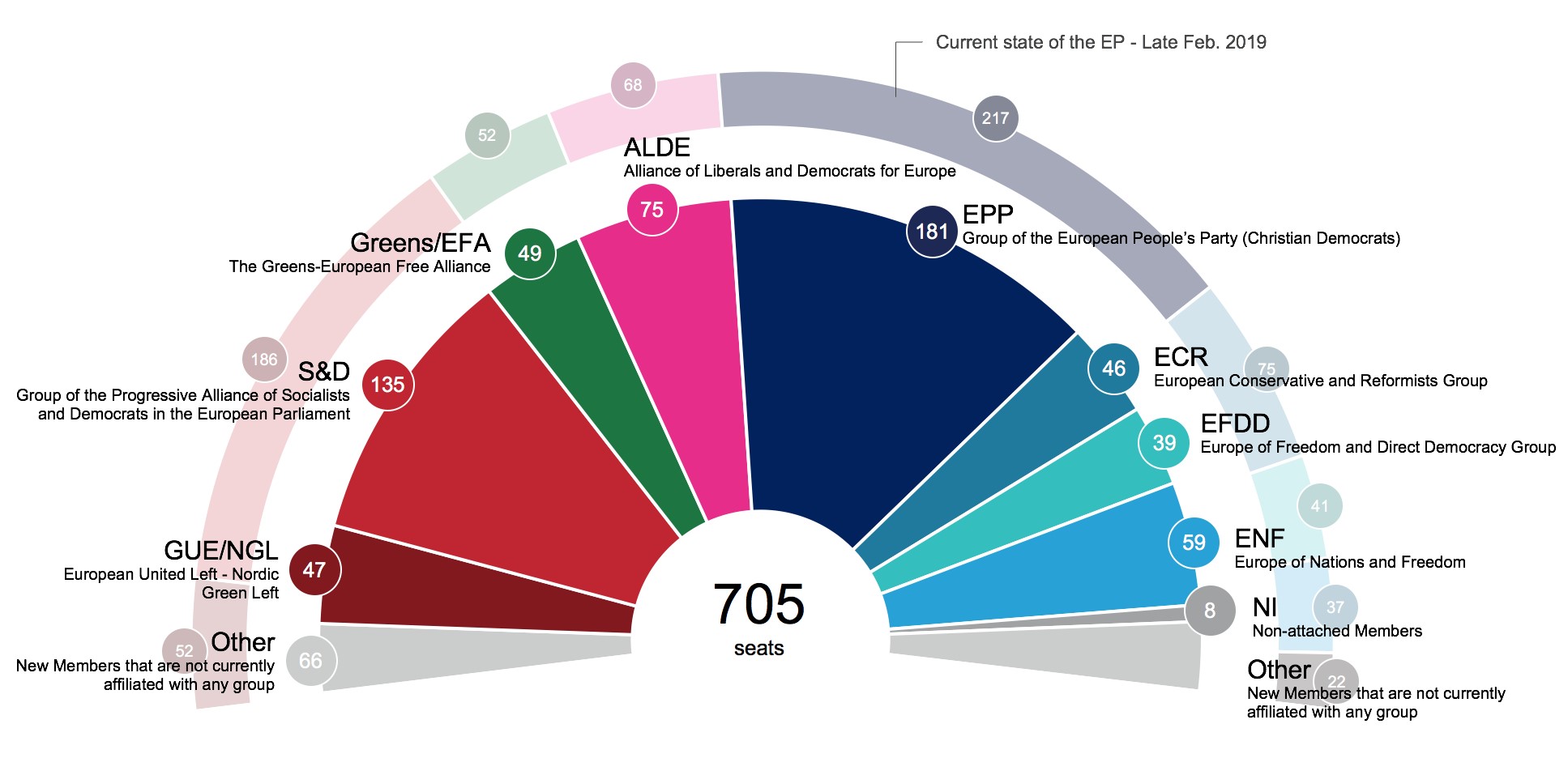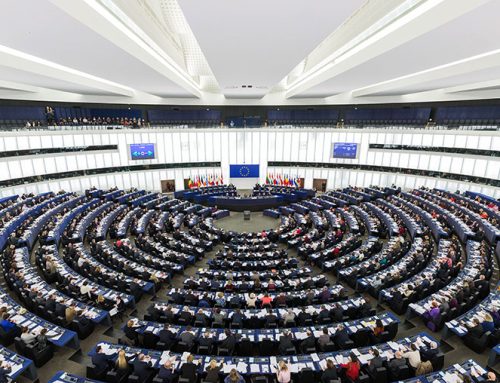The European Parliament has published a new set of projections showing what the next chamber would look like based on national polling data taken up to the end of February 2019. The data is based on a selection of reliable polls conducted by national polling institutes in the Member States and aggregated by Kantar Public on behalf of Parliament.
Parties are only allocated to existing political groups or where they are already affiliated to an associated European political party. All new political parties and movements, which have not yet declared their intentions, are categorised as “other”. The next Parliament will have fewer MEPs (705) than the outgoing Parliament (751).
All data can be downloaded from the press kit as an excel file with the complete catalogue of evolving voting intention polls from all Member States. The file will give detailed information on the national parties, their names, political affiliation on European level, their results at the last European and national elections as well as their standing in all voting intention polls collected. The polls themselves are identified including all defining criteria such as institute, sample size and fieldwork dates.
 Parliament will be publishing updated projections every two weeks until the end of April and every week during the month of May until election night itself. Initial exit polls will then be published on 26 May, for those countries that conduct them and where voting has finished, from 18.00 and every hour until provisional final results are available from all Member States.
Parliament will be publishing updated projections every two weeks until the end of April and every week during the month of May until election night itself. Initial exit polls will then be published on 26 May, for those countries that conduct them and where voting has finished, from 18.00 and every hour until provisional final results are available from all Member States.
The first direct elections to the European Parliament were held 40 years ago on 12 June 1979. This year’s elections will be the most important in Parliament’s history, given the political context, the envisaged departure of the United Kingdom and major political and cross-border challenges that need to be addressed. Voters will be going to the polls between 23 – 26 May to decide Europe’s future.




